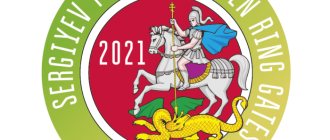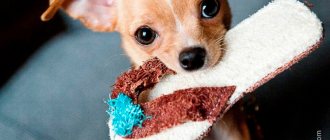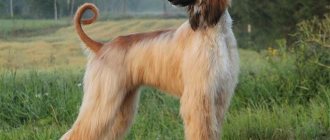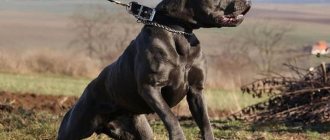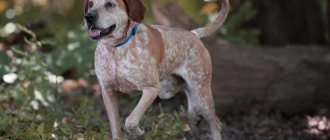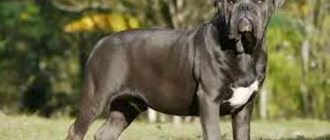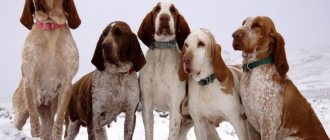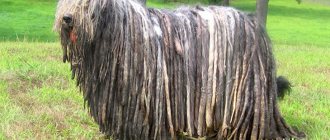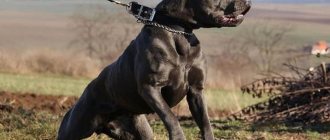Hunting dogs have existed since ancient times. Scientists believe that these four-legged helpers appeared in areas where hunting was the only means of obtaining food. Gradually they began to breed dogs specializing in various types of hunting. Some were used exclusively for baiting animals, others for bird hunting.
Nowadays, there are a variety of hunting dog breeds. Among them there are animals of large, medium and small sizes.
The main distinguishing features of such breeds include endurance and assistance in finding and capturing prey. These dogs are active and cheerful. Aggression is not typical for them, since they see a person exclusively as a friend.
Types of hunting dogs
Depending on the tasks assigned to the breed, several categories are distinguished.
- Hound dogs are designed to drive the beast and pursue it for a long time. The performance characteristics are considered to be viscosity, steaminess, speed, endurance, and urge.
- Greyhounds are essential for unarmed hunting. They work exclusively as a group. With the help of keen vision, they detect prey, follow it, and catch up with it. They lunge first, warning of danger.
- Burrowing representatives are adapted for passage into narrow spaces. Using their sense of smell, they discover the animal and bark. Their physique is distinguished by its stockiness and special strength for digging the ground.
- Pointers are primarily used for hunting game in various conditions. The coat and body structure make it easy to swim. Having discovered the victim, they take a stance and, with a command, scare away the bird, helping the hunter to shoot.
- Retweavers and spaniels are dogs for which it is important to be close to a person. Friendly, active dogs tirelessly pursue and hunt for animals and birds.
- Spitz-shaped representatives of the “hunters” are fearless, angry, aggressive working breeds. They all have dense fur and an undercoat that protects them from weather conditions and attacks.
Some breeds are on the verge of extinction. Work is now underway to restore the livestock. Hunting dogs received their main development during the Late Middle Ages, when the fashion for catching animals was introduced. Aboriginal dogs have not changed, so they have especially developed instincts for catching.
West Highland White Terrier
A brave, inquisitive mini terrier with a decorative appearance up to 28 cm tall. Owners and breeders have shortened the long name and affectionately call their pupils Westies or Westies.
The breed was bred in the western rocky part of Scotland to hunt small game in the rocky gorges. The name translates as Western Highland White Terrier.
Initially, little hunters had a rich palette of colors. But at the turn of the 19th - 20th centuries, two breeders, Duke J. Campbell and Colonel Ed. Melcom, they began to select only white-haired puppies for breeding.
Westies are now popular apartment dogs. They are covered with hard, non-shedding hair. It is enough to comb and trim dead hair once every 1–2 months.
Active, gambling Westies “remember” their hunting past. On walks they like to dig trenches and chase cats. But at exhibitions they evaluate their exterior and behavior, but do not consider their working qualities.
TOP hunting dog breeds
Greyhounds
Greyhound
The coat is short, the muzzle is elongated, the body is light. Due to its strong body, it runs short distances. Used as a hunting breed for catching hares and small animals in the fields. Considered a champion in developing running speed. The height at the withers is more than 70 cm and the weight is about 35 kg.
Deerhound
Tall Scottish Greyhound. The general physique is typical for representatives of this group of dogs. It is distinguished by shaggy hair and silver color. As a hunting, driven breed, it shows independence in behavior.
Irish Wolfhound
A Celtic dog that gained its fame in the Middle Ages. Until now, it is a representative of hunting breeds for driving large game, wolves, and deer. The fur is hard and sticks out in different directions. Height is tall, reaching 80 cm at the withers. High running speed helps to quickly catch up and attack. Natural fearlessness and agility are especially valued among dog handlers.
Spanish galgo
Tall, elegant dog. Known since the times of Ancient Rome. The body is lean, the muzzle is elongated, the tail and limbs are thin. When running it looks like an arrow. Covers vast distances without fatigue. A hunting breed for ungulates, game, and fur-bearing animals.
Slugi
Arabian hound for hunting hares and driving animals. The body is toned, the limbs are high. A muscular body and well-developed coordination attract lovers of hunting dogs. Able to run tirelessly and make turns without losing speed.
Italian Greyhound
Small size Italian Greyhound. Weighs no more than 5 kg. Externally, the physique is fragile, the torso is taut, the muzzle is elongated. Due to physical endurance, it can withstand loads well. She is called "the model of grace." A hunting breed with developed vigilance and the instinct of pursuit. Thin limbs are considered vulnerable. He is distinguished by special devotion.
Hungarian Greyhound
Hunting hunting dog. Excellently pursues rodents and large animals. Tall growth is combined with low weight (no more than 20 kg). This allows you to run fast. A muscular torso, a lean belly, an elongated muzzle - this is what emphasizes belonging to the “working dogs” group. Her character is wild, but group work turns her into an obedient representative of the Wolves.
Russian greyhound
It is distinguished by its silky coat, long legs, and elongated nose. In the recent past, it was popular among lovers of hunting hare and wild boar. The works of artists and sculptors are dedicated to her grace and elegance. Works great in a group.
Saluki
Refers to the oldest primitive greyhounds. Bred in Persia. Hunts in desert conditions, on mountain slopes. Catches up with prey at lightning speed. Her long ears are covered with thick locks, which makes her look funny.
Basins
Originally from Central Asia. It is distinguished by its tall stature and long limbs. Adapted to nomadic life. Able to quickly catch up with prey and bark. Ideally works as a group to track medium-sized, large animals.
Taigan
The Kyrgyz hound, in which genetically expressed hunting habits predominate. Outwardly she appears thin and fragile. This allows you to develop speed. Accompanies the horseman-hunter. It is on the verge of extinction.
Thai Ridgeback
Smaller in size than its relative from Africa. Characterized by fast running, agility, and a keen sense of smell. The wool is silver. On the back there is a ridge consisting of axial hair with reverse growth.
Whippet
A desperate, tall rat-catching greyhound. Characterized by rage and mercilessness. It was once a popular breed for driven hunting. Today it is used as a racing breed for performances.
Cirneco del Etna
Originally from Sicily. Intended for hunting hares. Looks elegant. The ears are large and erect. Reacts to the slightest rustle, moves quickly, does not know fatigue.
Silky Windhound
American Greyhound, distinguished by its soft dog body. Used for hunting purposes. He catches up quickly, pursues for a long time. Passionate at work, calm at home, this is a breed that does not tolerate being alone.
Hounds
Basset
A group of hound dogs varying in size. They are characterized by excellent work in groups when driving wild animals. Skin folds and tight fur protect against wounds. They have an obedient disposition and remember commands well. Requires physical activity.
Bloodhound
Originally from Belgium. A large, strong dog with a height of over 68 cm at the withers. Bred as a hunting breed for chasing and driving large game. The coat is dense, dense, and lies close to the body. Has a calm character. Particular expressiveness of the muzzle is given by pronounced brow ridges, long ears, and skin folds. Strength and power allow you to overcome long distances. Knows how to make friends, protect, track.
Beagle
An ideal dog for hunting hares. Lightning-fast running, power, and medium size make the beagle a dog that quickly catches up with its prey. Friendly, loves children, knows how to serve faithfully. Raised without problems, the temperament is active and cheerful.
Blue Gascony Basset
A small hound, which is characterized by a specific spotted coloring and a low-set body. The coat is tight, the body is long, the hind legs are slightly higher than the front legs. A trumpet howl is characteristic when prey is detected. Endowed with natural instincts of a hunter-stalker.
Hamilton's Hound
A Swedish breed bred to corral wounded animals. Doesn't like to work in a team. Having detected a victim, it gives a loud signal. Medium height, dense coat without undercoat. He understands commands and does his best for his owner.
Schiller Hound
The elegant breed was obtained by crossing German, Austrian, and Swiss hounds. Named after the farmer who first introduced the breed at a canine exhibition in the early twentieth century. She is characterized by an obedient disposition, a keen sense of smell and increased endurance.
Drever
A short-legged dog with an elongated body. The exterior is similar to a dachshund. Difference in color. The body is covered with large spots of black, white, and red. The wool is smooth and slippery to the touch. A tireless breed for burrow hunting and driving small animals. The sense of smell is keen, the hearing is well developed. When parenting, firmness is necessary.
Dunker
A selectively bred hound by crossing the best representatives of hunting breeds. He is taller than average, his body is strong and muscular. Adapted to frost and snowfall. Specializes in hunting the scent of a hare.
Spanish hound
An ancient breed that was used for pack hunting. After its ban, the population decreased. Restorative selection work is underway. It has a typical appearance for hounds. The body is muscular, the coat is dense and short. Huge drooping ears add a special charm.
Polish hound
Medium sized hunting dog. It is considered ideal for attacking and pursuing large forest animals. When detected, it stands up, lunges, and barks loudly. Outwardly similar to a Doberman. Follows the blood trail well. Does not tolerate raised voices, knows how to stand up for himself.
Rhodesian Ridgeback
Initially used for hunting elephants, then as a guard for slaves. A distinctive feature is a ridge on the back of hair growing in the other direction. The body is powerful, height reaches 70 cm at the withers. He can run fast, catch up, and attack first.
Russian hound
One of the popular breeds in pre-revolutionary Russia. Not recognized internationally. Characterized by hunting instincts, tracking, searching for wounded animals, and good obedience. The size is slightly above average, the physical qualities are excellent.
Russian piebald hound
Prized for excellent obedience. At the genetic level, it takes a blood trail, detects prey and loudly notifies the owner about it. The color is similar to the beagle. Paws, muscular torso, height no more than 70 cm.
Slovak cops
Medium-sized hunting breed from Slovakia. Suitable as a universal dog for hunting animals. Knows how to instantly find a victim, give a voice, and protect.
Transylvanian hound
A Hungarian dog with a medium size and lean body. She has a powerful chest and strong limbs. Color black with bright red tan. It was considered a royal breed and took part in spectacular gun hunts. Works on the scent as a tracking dog.
Porcelain hound
A rare breed, considered almost extinct. Medium size, white-spotted color. The ears are long, the torso is powerful. Hunting, baiting - favorite busy. Loves the owner, is supportive of other pets.
Finnish hound
A tall hunting breed, specially bred for the conditions of the country. Chases, catches up with the victim, attacks. Height is slightly above average, color is tricolor. Gets along with other pets.
Harrier
Bred in England specifically for hunting small and medium-sized rodents. Knows how to chase a wild boar. The peculiarity of the breed is the ability to catch up with hares and discover their burrows. Needs special education due to developed instincts.
Black and tan coonhound
The hound from the USA is specially bred for hunting raccoons. He is tall, his ears are long and hanging. Works in groups and alone. If prey is detected, it emits a high-pitched voice. Looks large and powerful.
Swiss hound
An ideal breed for hunting deer, roe deer, foxes, and hares. The physique is strong and muscular. The body is slightly elongated, as are the ears. Trumpet barking, sonorous. A friendly dog with working qualities.
Estonian hound
The tall dog looks like an enlarged version of a beagle. Works well in a group and tracks. The power of the body makes it a hardy hunter of game and animals. With proper upbringing, she becomes obedient. Not known for aggression.
Jurassic hound
A hunting breed for tracking animals on foot. Works on a blood trail. Looks powerful, average height. A cross between Swiss wild boar dogs in his blood. Calm temperament, measured character.
Cops
Weimaraner
A gun dog with hunting instincts to track down early game. In its homeland in Germany it is called the “Silver Dog” because of its specific coat color. Dependent on the person, remembers different commands with ease. Used as a companion or guard.
Hungarian Wirehaired Vizsla
A tall, stately dog, up to 68 cm tall, well-developed muscles, article. A universal hunting breed for catching game, small or medium-sized animals. Friendly with pets, loves children. She has a vulnerable character and is capable of jealousy.
Irish Setter
A tall, stately gun dog with brown fur that shimmers in the sun. Features a typical half-squat when detecting prey. Due to its strong muscles, it can quickly catch up and pursue for a long time. The character is obedient, requires long walks. Gets along well with children. A photo with a setter will become a real decoration of the album.
Italian bracque
Gun breed for hunting large and medium game. A lean, muscular dog, which has been known since the time of M. Medici. He can run fast due to his strong build. He is friendly towards others, can withstand pressure, and learns quickly. The color is white with bright red markings and is clearly visible in the forest.
Italian spinone
Belongs to the "Griffon" type. Large, hardy, versatile gun dog. Thick fur protects from wounds and thorns. Calm, obedient disposition. Copes perfectly with the tasks of finding wounded animals.
Kurzhaar
German pointer for hunting birds of different sizes. The torso is lean, the coat is dense and spotted. The character is obedient, knows how to remember commands. He is great with other pets and gets along well with children.
Pointer
A hunting breed bred through selective breeding to pursue prey. Works well in a group. He is tall, his stomach is lean, his torso is muscular. In everyday life he seems calm and balanced. On a walk, this is a real “search engine”.
Scottish Setter
A versatile, tall hunting dog. Color black and tan. The overall appearance is stately and arouses admiration. Friendly dog, open character. Knows how to stand up for himself.
Epagnol
A dog from the province of Brittany (France). Refers to cop dogs that perform the task of searching and capturing animals. Characterized by devotion, hard work, endurance. Unpretentious in everyday life, work in any weather.
Spaniels, Retrievers, Water Dogs
Welsh Springer Spaniel
An endangered breed from the Welsh Dogs group. The height at the withers is more than 46 cm in females. Known since the Middle Ages as a hunting dog with excellent working qualities. The disappearance of the livestock is associated with numerous wars in Europe. Restoration work is currently underway to select the best representatives.
Wetterhun
Water spaniel from Holland. Like a hunting dog on game. Not afraid to jump for prey, loves to swim. The body is covered with curly wool of a dense structure. On the head it is adjacent to the skin. Stubbornness prevents rapid training “to suit oneself”, but with persistence the result is an obedient dog.
Wolfhound
A collective group that includes large dogs. They can be the first to attack large animals without fear, are not afraid of difficulties, and can easily endure bad weather conditions. Everyone has a complex character that requires strict upbringing.
Drathaar
Wirehaired pointer from Germany. The coat color is brown with graying. Due to the special structure of the hair, it can withstand any weather conditions. Pursues prey without fear. When detected, it makes a characteristic stance and calls the owner with its voice. Works well in a group. There is no aggression towards people.
Irish Water Spaniel
An ancient type of hunting breed that is not afraid of stress, calmly swims in the water, and overcomes obstacles. The torso, powerful paws, wide sternum look harmonious in the overall appearance. It has a curly, dense coat. It does not get wet and helps regulate heat transfer.
Labrador
A hunting breed that has become a companion dog. Character: obedient, sincere, kind, curious. He is distinguished by his ability to serve faithfully. The size is large, needs training, which will help avoid weight gain. An ideal dog for hunting game.
Spanish water dog
A medium-sized breed that is not afraid of water. This is facilitated by the special properties of wool. In an adult dog, it is curled into runes, which creates a waterproof shell. The exterior resembles a large lap dog. She loves games and is never bored with her.
Curly coated retriever
Curley is better known in Britain. Game hunting breed. Not afraid of shots or loud sounds. The body is covered with a large number of hair curls, which protects it from getting wet. Knows how to make friends, loves company.
Langhaar
German gun breed. Initially, it was assumed that it would resemble a bear in appearance. As selection progressed, she turned into a typical large spaniel. Temperament is moderate, without aggression, loves family and other pets.
Picardy Spaniel
French hunting breed. Tall, elegant, able to travel long distances. Silky wool has water-repellent properties. He is characterized as a sociable dog who loves family and children.
Portuguese water dog
Used as a gun hunting breed that is not afraid of shots. The exterior resembles a royal poodle after a beauty salon. The back of the body is covered with dense short hair. The head, sternum, and forelimbs are decorated with thick hair with water-repellent properties.
Flat-Coated Retriever
This hunting breed from Great Britain is the result of selective breeding to select the best qualities. Flat is used when catching waterfowl. Character is obedient, affectionate, kind. Children like him and is loyal to other pets.
Sussex Spaniel
A gun hunting breed, known since the mid-19th century. Medium sized dog. The coat is elongated, typical for this group of dogs. The color is bright red. Most often used as a companion.
Field Spaniel
An obedient dog for universal hunting. It has a beautiful shiny coat of dark colors. Loves to play, move actively, and welcomes his relatives into the company. She tends to gain excess weight, so she needs physical activity.
French Spaniel
Working hunting dog from the Setters group. The coat is spotted, predominantly white and brown. The size is above average, about 58 cm at the withers. An ancient breed that is little known outside its homeland.
Chesapeake Bay Retriever
Official symbol of the state of Maryland (USA). Bred for duck hunting. The coat color is brown and does not allow water to pass through. Learns quickly. Large obedient working dog.
Terriers
Border Terrier
The homeland is considered to be the border between Scotland and England. The smallest of the hunting dogs. The height is only 28 cm, the weight of an adult dog reaches no more than 7 kg. Hunting instincts allow them to pursue and catch small animals, mainly badgers and foxes. Attached to the family, loves children. The psyche is balanced, relatively calm.
Valencian rater
The Spanish Pied Piper was bred to hunt small rodents. Average height, lean body, erect ears, narrow muzzle. The color is white with large spots. The character is nervous, very active. Whenever there is any noise they bark loudly. They like to play a lot and follow commands. Used for sports entertainment performances.
Welsh Terrier
Originally from Wales. The dog is compact in size and is a smaller copy of the Airedale. Wool requires trimming. During walks he is active, does not miss fights, and gets into squabbles. He loves physical exercise, follows commands, but is stubborn and arrogant. Courage is the main flaw of a burrowing dog, which prevents it from being very obedient.
West Highland White Terrier
The “Scotsman” with snow-white fur easily crawls into narrow holes and overcomes obstacles. A squat, short dog with whom there is never a dull moment. Very active, loves activity. His hunting sense turns him into a real tracker.
Smooth Fox Terrier
An ancient hunting breed for hunting foxes and small animals (badgers, hares). Unlike its wire-haired counterpart, it is slightly taller in height. An active dog that runs for hours without getting tired. Needs constant loads. He has an easygoing disposition, loves children, and knows how to protect.
Glen of Imaal Terrier
Useful in badger hunting. Originally from Ireland. The wool is hard, light sand color. The body is long, the legs are short. An excellent breed for burrow fishing. One must be careful when raising with other pets. He is able to mistake them for prey.
Dandie Dinmont Terrier
A dog from the group of Scottish terriers, characterized by restlessness combined with an excellent hunting sense. Squat, with short legs, it performs well in burrow hunting. He has natural charm, liveliness and spontaneity.
Jack Russell Terrier
An active small dog is a bright representative of small hunting breeds. Compact dimensions allow you to fit into narrow spaces. Suitable for those who value a restless disposition and will be able to control their behavior.
Wire Fox Terrier
The owner of a special coat that prevents dirt and getting wet. The lively character, keen sense of smell, and agility make the breed ideal for burrowing and driven hunting. Obedience is satisfactory. Able to quickly get distracted and run away.
Irish Soft Coated Wheaten Terrier
Unlike other terriers, the representative of Ireland has a soft, fluffy coat. Size is medium. Loves activity, games, long walks. A tireless, active dog with whom you will not be bored. He hunts small animals well, he knows how. look for prey.
Irish Terrier
A stately, fit torso, keen sense of smell, and increased activity make this breed indispensable for hunting. The character is typical for representatives of this group. Prone to mood swings. Loves long walks in the forest. The owner will have to be patient with an overly dynamic temperament.
Cairn Terrier
One of the few dogs that have not been selected. An ancient breed for hunting foxes, badgers in quarries, piles of stones. A lively, active, spontaneous small dog.
Kerry Blue Terrier
The Irish Pied Piper has a hypoallergenic coat with a soft, silvery coat. Very obedient, knows the terrain well. Valued for fearlessness and friendliness.
Sealyham Terrier
Obtained in Wales through breeding work to select hunting qualities. Excellent intelligence and small size help in catching small animals. Wool requires constant care to avoid tangling and unsightly appearance.
Skye Terrier
A compact breed with long hair, short legs, and agility. Despite their small size, they boldly enter into battle. Hunting instincts are used to catch animals, burrow work on foxes and badgers.
Teddy Roosevelt Terrier
Brave little dog. Typical of him is the behavior of a furious hunter who knows no fear of the beast. The exterior is similar to the Jack Russell Terrier, but the body is longer and weighs more.
Fox terrier
A funny dog with a cheerful disposition. Used for fox hunting. Externally similar to the Airedale Terrier. Loves family. Compact size allows you to keep it at home. He can jump high, is trained, and remembers commands.
Czech Terrier
Specializes in burrow hunting. The wool hangs down the sides, forming a skirt. Copes with the tasks of finding the beast. Due to the squat type of structure, it quickly and deftly crawls into narrow spaces. The height is small.
Scottish Terrier
Burrowing hunting dog. The wool is black. The body is long, the legs are short. Its excellent sense of smell and natural qualities make it indispensable for hunting fur-bearing animals.
Jagdterrier
A versatile, medium-sized hunting dog. It is distinguished by enviable tenacity in pursuit of the beast, fearlessness, and courage. Does not like competition, does not recognize others in the pack well. Anger, rage, and stubbornness are not the best characteristics for parenting. The owner will have to do a lot and constantly.
Spitz-shaped
American Akita
A spitz-shaped breed obtained by crossing a Japanese Akitu Inu, a mastiff, and a German shepherd. The result was a large dog with a thick undercoat and hunting and guard instincts. She is more powerful, muscular, and can withstand long walks.
Basenji
Originally from Central Africa, it is one of the oldest primitive breeds. The main differences are the lack of barking ability, hunting instincts, and hypoallergenicity. The dog's behavior requires constant training and a strict approach to character development. It is difficult to get along with pets.
East Siberian Laika
A large dog among representatives of its class. Compared to the Siberian Laika, it has a more elongated body. Used for hunting large and medium-sized animals. Attacks quickly, has fearlessness, natural tenacity, and determination.
West Siberian Laika
As a working breed, it was first obtained in the USSR by crossing the best representatives. Thick undercoat, strong chest, tirelessness - distinguishes the dog from others. Coat color ranges from white to milky shades. Possesses physical strength, courage, determination. According to the standard, the height of a male should not exceed 62 cm.
Kai
Medium sized Japanese hunting dog. In appearance it looks like a black husky with stripes. A primitive breed that displays leadership qualities. Chooses one owner for itself. When raising, you will have to make a lot of effort due to the natural tendency towards aggression.
Karelo-Finnish Laika
Belongs to the Spitz-shaped representatives. Used as an assistant for corralling and detecting wounded animals of large animals and birds. Obedient with skillful training. Medium size, coat with a rich undercoat, allowing protection from bad weather conditions. The bright red color is clearly visible in the snow.
Karelian Bear Dog
It has a pronounced hunting instinct. Not afraid of large animals, capable of attacking first. An excellent walking companion. The character is active, cheerful, open. Size is medium.
Korean Jindo
A dog for hunting medium and large game or animals. Quickly detects prey, barks loudly, and bites. Wool with a double undercoat allows protection from wind and snow. Without a person, he misses his relatives. Needs constant attention.
Podenco Ibicenco
The Ibizan Greyhound belongs to the group of primitive, Spitz-shaped breeds. Bred for hunting small game. An elegant, beautiful dog can run fast, climb high, and jump. The color is white with red tan. Height is high. Active and curious disposition.
Russian-European Laika
The breed was bred in the USSR for hunting large animals in harsh winter conditions. The color is white combined with black spots. Barks profusely when it detects prey, bites, and attacks first. Fearless dog. The character is complex, but with proper upbringing, obedient.
Shiba Inu
The oldest hunting breed. Small size, stubborn and aggressive character. The undercoat is thick and well developed. The compact dog is used for catching small and medium-sized animals. Knows how to find and bark at prey with a loud bark.
Shikoku
Medium sized dog. The character is restless and complex. Knows how to track and pursue animals in the forest, among mountain slopes. Quickly finds prey and attacks. The thick undercoat protects against cold and bites.
Finnish Spitz
Aboriginal hunting breed of medium height. The fur is bright red. Searches for and barks at prey, adapted to difficult weather conditions. Used for catching large game and wounded game.
Hokkaido
Shibu's closest fearless relative is Akito Inu. Named after a Japanese province. Possesses the skills of a hunting breed that can cope alone. Loyal to the owner. Overly aggressive with others, needs socialization.
Swedish Lapphund
Lapladian medium husky for hunting wild animals. Works through blood, pursues, catches up. Wool helps to withstand snow drifts. Activity requires constant loads.
Yakut Laika
An indigenous breed bred in the territory of the “dog rivers”. Breeding was cultivated in the USSR due to its excellent hunting qualities and unpretentiousness. The rich undercoat protects from wind and snow. They calmly tolerate being around other pets.
Yamthund
Swedish husky for catching medium and large animals. A passionate hunter, capable of attacking first. Doesn't get along well with others due to instincts. Active disposition, sharp character.
Spaniels
A small group of dogs with a peaceful and friendly character. Spaniels are considered attentive hunters, good at tracking the tracks of game.
Cocker Spaniel
A very beautiful dog with long ears. The Cocker Spaniel has soft short hair that is slightly curly on the limbs and ears. He has a large elongated muzzle. The original purpose of the breed was hunting birds and small game.
However, her good nature made her a wonderful companion. If you do not take your Cocker Spaniel out hunting in the forest, he will not suffer, as he loves to spend time with his family members. He always warmly greets his owner when he returns home. The dog also loves to spend time playing ball.
Some representatives of this breed are wary of strangers, but angry cocker spaniels are quite rare. They are friendly and gentle. They are not characterized by excessive activity and curiosity. When an animal is mentally or physically exhausted, it will go to sleep next to its owner, perhaps leaning against him. Can't stand loneliness.
Clumber Spaniel
The dog is not hasty, but very hardy. She has an excellent instinct for field game and is able to serve absolutely all birds.
The Clumber is a fluffy dog whose coat is ninety percent white. The cheeks and eyelids are drooping, which often causes eye problems. Clumbers have close contact with their owner and need constant attention and exercise.
English Springer Spaniel
The fastest of all spaniels. They can serve game, they can bring it, they can search for it. They are not afraid of water and jump into the water with ease. Very loving.
Russian hunting spaniel
A universal hunter of all game birds. A very energetic and hardy breed. Thanks to their excellent sense of smell, Russian spaniels are used by the military to search for weapons and explosives. They get along with people, children and pets. This breed is used for swamp and steppe game birds. A long-haired dog of small stature. The ears are long and slightly wavy.
Other representatives of hunting breeds
Jomon-shiba
Outwardly it resembles a small Japanese mountain wolf. Known only in Japan. Possesses fearlessness and rage. This is an ideal dog for a hunter due to its natural sense of smell and high level of development of the sense of smell. Parenting is very difficult.
Catahoula Leopard Dog
Recognized as the official symbol of the state of Louisina (USA), it is not known outside its country. Registered in 1995. Height is slightly more than 60 cm. The color of the coat is spotted, reminiscent of a leopard. Suitable for hunters of large and medium-sized wild animals. He has a keen sense of smell, the ability to jump high and cover distances.
Dachshund
A magnificent hunter with an elongated body and short legs. Used for catching badgers and foxes. By nature she is endowed with a keen sense of smell and a ringing bark. Acts as a security guard. Parenting is difficult due to his nimble nature and disobedience. Valued by lovers of burrow hunting.
Tenterfield Terrier
The breed is not officially recognized. Originally from Australia, introduced during the development of the continent as a rat hunter. At the withers it is only 28 cm. He has a good sense of smell and a lively temperament.
Helleforshund
Easily hunts deer. Similar to spitz-shaped representatives. The character is lively, has irrepressible energy. The sizes are average. From the outside they resemble a cross between a husky.
Hortaya greyhound
A very rare breed. Used successfully in remote areas for hunting. Not included in the general classification. The general appearance is similar to greyhounds. It began its development from the times of Kievan Rus. Has not been subjected to selection.
Chukotka sledding
An indigenous breed for working in harness and carrying heavy loads. Helps hunt sea animals and withstand cold weather. Endurance and activity are the main traits of a dog.
Swedish White Elkhound
The breed is called "moose husky". Not classified as a group. A bit like a husky. Snow-white fur makes the dog invisible to the animal in snowy conditions. Considered rare, the population is small.
Poodle
French decorative dogs. In the past they were very popular in aristocratic circles. Louis XVI officially declared them a court breed, for which they received the name royal.
Miniature Poodle.
In the FCI, poodles were divided into 4 groups based on size. Two of them are miniature:
- dwarf – up to 35 cm at the withers;
- that - up to 28 cm.
They have two types of fur. Curly curls into elastic, elastic curls. The corded one is woven into thin cords at least 20 cm long. White is one of 6 classic colors. Haircuts have been developed for show poodles.
Poodles have a reputation for being kind, considerate, and sensitive dogs regardless of size. They love to please their owner and are easy to train. In terms of obedience and intelligence, they are second only to the Border Collie.
Interesting: Rating of smart small dogs according to S. Koren.
Advantages and disadvantages
Every breed has its positive and negative aspects.
Hunting breeds differ:
- special character, emphasizing activity, obedience, dependence on the owner;
- wool does not require special ongoing care;
- are able to understand a person’s words;
- They are friendly towards their relatives.
Negative aspects are associated with the instinctive desire to run a lot, sniff, and search. They need constant physical activity. Suitable only for those owners who are willing to tolerate the antics of the “hunter”. Keeping them in an apartment becomes problematic for many due to the ringing, trumpet-like or deafening bark that turns into a howl.
French Bulldog
The standard allows only 3 types of color for French bulldogs: brindle, spotted, fawn. The pure white color of the coat does not contradict accepted standards. It is considered spotted because pigmentation remains on the skin, nose, rim around the eyes, and claws.
French Bulldogs are among the top ten popular pet dogs in the world. An easy-going, kind character, non-trivial appearance, easy care - all this attracts both experienced owners and beginners.
French bulldog puppy
The French do not like loneliness, but they find activities and entertainment. This funny promotional video stars a white French bulldog.
How to choose the right puppy
To select a future reliable puppy you need:
- know the characteristics of behavior;
- consider different options depending on your hunting goals;
- choose a nursery;
- exclude genetic defects by veterinary examination.
The puppy must be active, cheerful and brave. Excessive cowardice or aggressiveness is excluded.
The competent choice of a dog for the hunter’s goals is a real science that is not difficult to comprehend. It is important to follow simple rules and count on the breeder’s integrity. A defective dog is a huge set of problems.
Training should be carried out by an experienced dog breeder who is able to maintain character, show perseverance, and attention to the future assistant.
